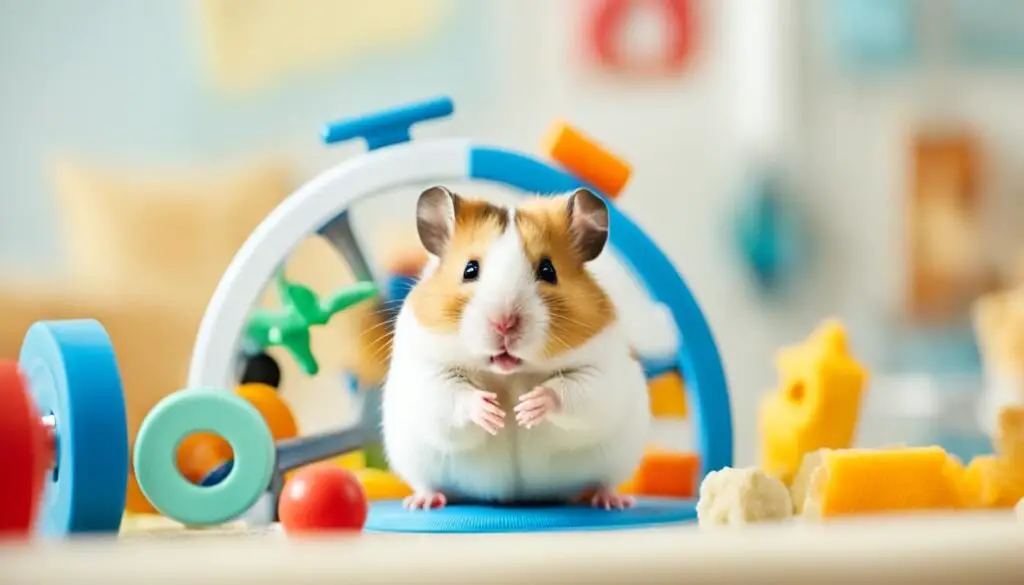Did you know that hamsters are capable of producing a wide variety of sounds, including squeaking? These tiny creatures have a surprising vocal range that can provide valuable insights into their behavior and needs. Whether they’re expressing happiness, fear, annoyance, or even pain, their squeaks serve as a form of communication. Understanding why hamsters squeak can help you build a stronger bond with your furry friend and ensure their well-being. So, let’s dive into the fascinating world of hamster squeaking behavior and explore the reasons behind their adorable vocalizations.
Reasons for hamster squeaking
Hamsters are adorable little creatures that rely on vocalizations to communicate their emotions, needs, and even their dominance. By understanding hamster vocalizations, you can gain valuable insights into their world and strengthen the bond with your furry friend.
A happy and content hamster may emit low-pitched squeaks or even chirping noises, signifying their joy and contentment. It’s a delightful sound that reassures you that your hamster is in a positive state of mind.
On the other hand, high-pitched squeaks can indicate fear or being scared of something. In moments of danger or when they feel threatened, hamsters rely on these distinctive high-pitched vocal cues to signal their distress.
Hamsters may also squeak when they are annoyed or when they need something. It’s their way of letting you know that they require attention or that something is bothering them. By paying attention to these vocal cues, you can identify their needs and provide a nurturing environment.
Furthermore, hamsters use vocalizations to communicate with each other. Their squeaks convey messages of happiness, alertness to danger, or assertive behavior when establishing dominance within their social hierarchy. By observing and interpreting these vocalizations, you can gain a better understanding of your hamster’s communication with fellow furry companions.
Remember, each hamster has its unique vocal repertoire, and it may take some time to decipher their individual noises. Paying close attention to their vocal cues and accompanying behaviors will enable you to develop a deeper understanding and strengthen your bond with your hamster.
Interpreting hamster squeaks
Interpreting hamster squeaks can be a bit challenging, as different squeaks can have different meanings. However, there are some general guidelines to help you decipher your hamster’s vocal cues.
Happy squeaks are typically low in pitch, resembling soft chirping sounds. These contented vocalizations indicate that your hamster is feeling joyful and at ease. On the other hand, scared or annoyed squeaks are often higher in pitch and more continuous, suggesting fear or annoyance. Pay attention to the intensity and frequency of these squeaks as they can provide insight into your hamster’s emotional state.
If you notice that your hamster is squeaking persistently, it may be trying to alert you to something. Take a closer look at their behavior and search for other signs of distress or discomfort to better understand their needs.

Remember, interpreting hamster squeaks requires patience and observation. Each hamster may have their unique vocalizations, so take the time to understand your pet’s individual language. By decoding their sounds and paying attention to their non-verbal cues, you can improve your communication and strengthen your bond with your hamster.
Respiratory issues in hamsters
While hamsters may squeak voluntarily, it’s important to be aware that respiratory issues can also lead to wheezing or squeaky sounds while breathing. Dust from improper bedding or bathing sand, as well as common colds, can contribute to respiratory problems in hamsters. If you notice your hamster making wheezy squeaks or struggling to breathe, it’s crucial to seek prompt veterinary attention. Ignoring these signs can result in the progression of respiratory problems to more serious conditions.
Respiratory issues in hamsters can cause significant discomfort and compromise their overall health. It’s essential to ensure that you provide a clean and dust-free environment for your pet, including proper bedding materials. Regularly check for any signs of wheezing, coughing, or labored breathing, as these may indicate respiratory distress. Consulting a veterinarian who specializes in small animals is the best course of action to address and treat these issues effectively.
Conclusion
Understanding hamster squeaking behavior and interpreting their vocalizations is crucial for fostering a strong bond with your pet and ensuring their overall well-being. By paying close attention to their vocal cues and interpreting their squeaks, you can gain valuable insights into their emotions, needs, and potential health concerns.
When your hamster squeaks, it’s important to observe their behavior and look for other signs of distress or comfort. Are they displaying signs of fear, annoyance, or pain? Or are they emitting low-pitched, joyful squeaks? By understanding the context and pitch of their vocalizations, you can better respond to their needs and create a nurturing environment.
However, it’s equally important to remember that hamsters may also make wheezing or squeaky sounds due to respiratory issues. Dust from inappropriate bedding or bathing sand, as well as colds, can lead to breathing problems and vocalizations that indicate discomfort. If you notice any unusual breathing patterns or persistent wheezing, it’s essential to seek veterinary attention promptly.
In conclusion, by developing a deeper understanding of your hamster’s vocal cues, you’ll become more adept at meeting their needs, ensuring their happiness, and providing them with a healthy environment. So, continue observing, interpreting, and responding to their squeaks, and enjoy the enhanced connection you’ll build with your beloved furry friend.
